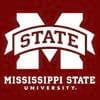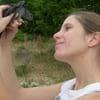Testing for Avian Paramyxovirus-1 (Newcastle Disease) in Resident Passerines of Vicksburg National Military Park
Published: July 27, 2017
Source : Andrea J. Ayala 1, Tiffany N. Tabor 2, Alejandro Banda 2, Daniel J. Twedt 1.
/1 U. S. Geological Survey, 2524 South Frontage Road, Vicksburg, MS, USA; 2 Poultry Research & Diagnostic Laboratory, Mississippi State University, 3137 Highway 468 West, Pearl, MS, USA.
Newcastle Disease, caused by Avian Paramyxovirus-1 (APMV-1), is a highly contagious viral disease affecting wild and domestic birds. Neurological and respiratory manifestations are most common, with viral strain and host species influencing susceptibility and virulence. Although clinical signs range from asymptomatic to lethal, APMV-1 is significant to the poultry industry as mortality may reach 100%.1 Evaluation of potential reservoir hosts has focused on wild fowl (Galliform and Pelecaniform species). However, alternative transmission from unvaccinated free-ranging chickens (Gallus gallus) to migratory and resident songbirds may be of conservation concern, as many of these species have had population declines.2,3 Free-ranging chickens adjacent to Vicksburg National Military Park, in west-central Mississippi, prompted serological examination of two common, resident passerines for the presence of APMV-1 antibodies during the summer 2010.



METHODS
We captured Northern Cardinal (Cardinalis cardinalis) and Carolina Wren (Thryothorus ludovicianus) during June and July 2010 using mist nets. We chose these species because they are common in Vicksburg National Military Park4 and as resident species, they were presumed at increased risk of viral exposure from domestic fowl adjacent to the park. Upon capture, we determined age and sex5, and uniquely identified each individual via a number metal leg-band. We then collected ~0.1 ml of blood (0.04 ml serum) from the brachial vein on filter-paper strips. Blood samples were dried at 37°C and stored in open ZiplocTM bags prior to being placed in standard, 96-well plates and eluted using a microplate vibrator. We assessed Newcastle Disease virus antibody levels using a beta hemagglutination inhibition assay which included healthy avian erythrocytes as well as positive and negative controls.
RESULTS
We obtained 29 blood samples, but 1 was lost and 1 was unusable. Two sampled birds were recaptured at later dates, a 7.1% sampling recapture rate: 1 was resampled. All inhibition assays were negative for Newcastle Disease (APMV-1) antibodies. As hemagglutination of avian erythrocytes was not inhibited, no antibodies were present for APVM-1.


CONCLUSIONS
We failed to detect the presence of APMV-1 in songbirds within Vicksburg National Military Park, but our small size and short duration of sampling renders any conclusion regarding presence or absence premature. Few other studies have assessed APMV-1 in passerine birds, although the virus has been isolated from wading birds in the southeastern U.S., including Mississippi.6 Thus it possible that the virus is present among the avian population, but we did not detect it due to the scope of our study. A larger, long-term sampling effort is likely required to assess the presence of this pathogen in songbirds. Such studies are especially warranted within areas such as Mississippi, which has substantial poultry production and critical stopover sites for migratory songbirds.
[1] Capua, I. & D.J. Alexander (eds) Avian Influenza & Newcastle Disease (2009)
[2] Hernandez-Divers, S.M. et al. Avian Dis. 52(4):558-566 (2008)
[3] Butcher, G.S. & D.K. Niven, Combining data from the CBC and BBS to determine continental status and trends of N. American birds, National Audubon Society (2007)
[4] Somershoe, S.G. et al. The Condor 108:691–699 (2006)
[5] Pyle, P. Identification Guide to the Birds of N. America. (1997)
[6] Farley, J.M. et al. J. of Wild. Dis. 37(4): 808-812 (2001)
Related topics:
Mentioned in this news release:


Recommend
Comment
Share

Would you like to discuss another topic? Create a new post to engage with experts in the community.














